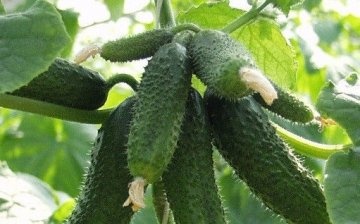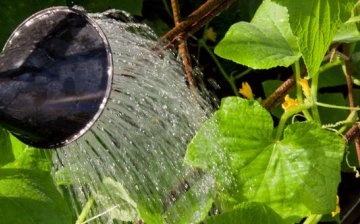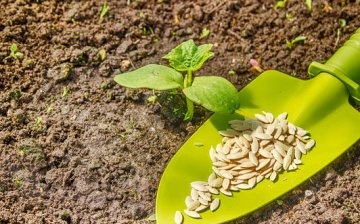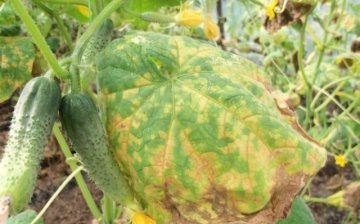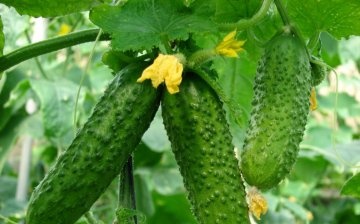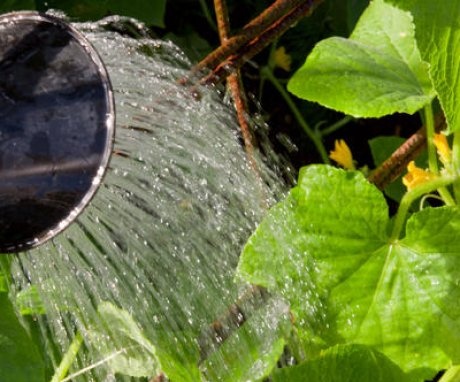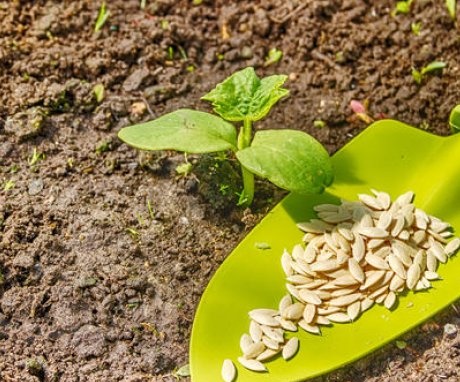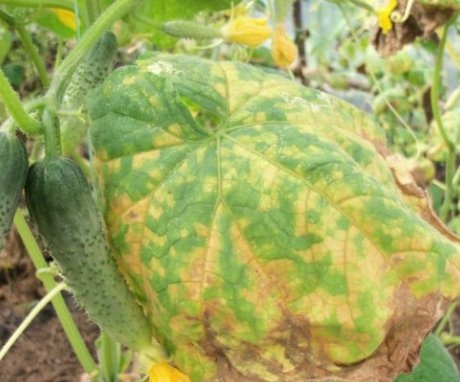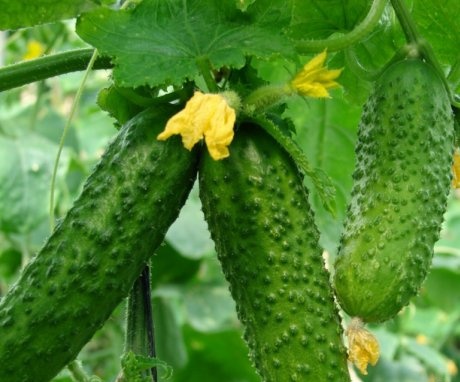Cucumber Cupid F1: description, agricultural technology, reviews
Cucumber varieties Amur F1 are one of the most popular for growing on private plots. This is a hybrid variety, which means that it was bred by breeders in order to improve its qualitative and quantitative characteristics. It has many advantages, one of which is high resistance to adverse environmental conditions. The variety has its own characteristics, which are worth knowing before purchasing seeds.
Content:
- Variety characteristics and care tips
- Landing: timing and rules
- Diseases and pests
- Benefits and reviews of the variety
Variety characteristics and care tips
Cupid belongs to the early varieties. The maximum amount of harvest can be obtained in the first month of fruiting of the plant. Many call the variety ultra-early, since less than 45 days pass from germination to first fruits. The plant does not require complex care.
Features of the structure:
- The plant is powerful, large, up to 8 fruits can form on one node.
- The fruits have a dense, thick rind of dark green color. There are small bumps on the peel, evenly spread over the fruit.
- Leaves and fruits are covered with fluff.
- The flowers are large, bright yellow.
- The shape of the fruit is oval, fusiform.
- Medium-sized cucumbers. The weight of one fruit can reach 110 g, length - up to 15 cm.
The fruit has a high taste and, when grown correctly, does not produce bitterness. The crop can be harvested every 2 days, but experienced gardeners recommend doing this once a week.
Variety care is standard:
- Regular watering... Like any plant, a cucumber needs water. Water the cucumbers as the soil dries. If the summer is dry, watering is required 2 times a week. To do this, use lukewarm water. Pour cucumbers under the root, trying not to get on the leaves and fruits. In the hot sun, they will burn in the form of yellow spots.
- Loosening the soil. Near the root, it is necessary to constantly loosen the soil. This is done after watering when the ground is soft. In dry weather, a dense crust appears on the soil surface. Loosening allows oxygen and moisture to penetrate into the deeper layers of the soil. Loosening must be done carefully so as not to damage the root and stems.
- Deleting weeds... Weed plants prevent cucumbers from growing normally, take up moisture and sunlight. Weeding regularly will help you get a large yield of large fruits.
- Mulching... Mulching can greatly simplify the care of plants. Peat and rotten sawdust are often used as mulch. This technique helps to protect the roots of the plant from temperature extremes, retain moisture, and get rid of frequent loosening.
The hybrid variety is more stable, but simple care rules should not be neglected. The yield largely depends on this.
Landing: timing and rules
Since Cupid F1 is an early ripening variety, it can be grown both as a seedling and non-seedling method. It is perfect for greenhouses and open ground.
It is recommended to sow seeds when it is warm and there is no night frost. As a rule, seeds are sown in open ground at the end of May, when the nights are already warm. Greenhouse cucumbers can be sown earlier.
When planting the Amur F1 variety, you need to adhere to the basic rules:
- When sowing seeds, the soil should be warm. Open beds should be covered with foil.In the Moscow region, it is recommended to sow prepared seeds that have already hatched in the first half of June, since the nights can still be cold in May. When sowing in June, the beds do not need to be covered.
- The sowing soil should be prepared, fertilized, loosened, slightly moistened. The seeds are deepened 1-1.5 cm into the soil. Sprinkle the seeds with a wet mixture of soil and peat in a thin layer.
- The film protects seedlings from low temperatures and helps to maintain soil moisture. When the first shoots appear, they must be thinned out, pulling out the weakest ones.
Seedling growing is suitable for regions with cold and long winters. It allows you to protect seedlings from frost. The roots of cucumbers grow quite strongly, so it is advisable to plant seedlings in a deep container with a volume of at least 400 ml and a height of 12 cm. The soil can be bought at gardening stores. Any potting soil mix will work for cucumbers. It has enough fertilizer for good plant growth.
When choosing seeds for seedlings, you need to select only those that have sprouted a little.
If the sprout is already large, such seeds are discarded, since the plants from them will be weak, and there will be little harvest. Sow seeds flat. If they were germinated in advance, then with early sowing, the seeds should be dry, so with a lack of heat they can rot in the ground.
The distance between plants should be at least 15 cm, and between the beds - 20 cm. It is most convenient to plant cucumbers with holes. In each hole, 3 plants are placed at a distance of 10 cm from each other. If you follow these rules, you can achieve a rich harvest. You can collect up to 14 kg of crops from 1 square meter of land.
Diseases and pests
The hybrid variety Amur F1 is quite resistant to diseases and pests. It resists fungal infections and parasites well, but cucumbers can still get sick. The reasons may be improper care, unfavorable growing conditions, etc.
Among the most common diseases and pests of cucumbers are:
- Powdery mildew... The disease is caused by a fungus. A white bloom appears on the surface of the leaves, after which they turn yellow and dry out. Powdery mildew appears if the summer is cloudy and cold. With the sun and high temperatures, the fungus dies. To fight the disease, you can purchase fungicide in the store, use a solution of colloidal sulfur to treat plants.
- Cladosporium. Dark brown spots appear on fruits and leaves, which quickly increase in size. As a rule, the disease spreads through plant debris in the soil, in which the spores of the pathogenic fungus remain. To get rid of the disease, you need to stop watering for a while, treat the plants with a solution bordeaux liquid or special drugs.
- Sclerotinia. The second name for this disease is white rot. White spots appear on the leaves and stems, which darken and spread throughout the plant. Leaves covered with sclerotinia begin to rot. In order to avoid the occurrence of the disease, you need to plant cucumbers at a sufficient distance and till the soil. For treatment, lime, crushed coal are used, and the affected parts of the plants must be removed.
- Ants. Ants are both good and bad. They can damage root system cucumber and bring aphids... To fight ants, they use special traps, kerosene, which can be used to fill ant nests. You can also remove ants by pouring boiling water over the soil.
- Whitefly. This small insect loves to lay larvae on the inside of a cucumber. They feed on plant sap, which is what they do harm. It is difficult to remove the whitefly as it is very fertile. Sometimes tobacco is planted next to cucumbers, which distracts insects from cucumbers, and loosening of the soil is also used.
When dealing with pests and diseases, it is important not to forget about prevention, as many diseases can return.Spores and larvae are often stored in the soil, so you shouldn't neglect it.
Benefits and reviews of the variety
Cupid F1 is quite popular among gardeners. It can be grown for food or for sale. Like any variety, it has its pros and cons. Even a beginner can grow these cucumbers.
Among the advantages of the variety are:
- High palatability. The fruits of the variety are tasty, juicy, and do not have an unpleasant bitter taste.
- High productivity. The variety gives a large yield from each bush. In addition to the large number of fruits on the Amur F1 bush, it bears fruit for a long time. The seeds have a high germination rate, so gardeners love this variety.
- Early flowering. The plant begins to bloom and bear fruit much earlier than ordinary cucumbers. This allows it to be grown year-round in greenhouses.
- Resistant to temperatures and diseases. This variety is not afraid of the cold, therefore it is suitable for regions where summer is cold, but Cupid also tolerates heat well.
- Unpretentiousness. To obtain a large harvest, no complex and painstaking care is required. The basic rules for caring are enough cucumber.
- Possibility of long-term storage. Cucumbers of this variety are conveniently transported over long distances. They have good keeping quality and can be kept cool for a long time. The fruits do not turn yellow and do not lose their appearance and taste for several days.
Reviews of the variety among gardeners are usually positive. Experienced gardeners claim that Amur F1 allows you to grow a large amount of crops even on a modest plot and without the use of expensive fertilizers. Also, this variety is suitable for sale, as gardeners note the attractive appearance of the fruit. They ripen together and have good taste.
Among the disadvantages is the fact that these cucumbers are not suitable for canning. They are tastier when fresh than canned. However, lightly salted cucumbers of the F1 variety are also quite popular. It should be clarified that the yield depends not only on the variety, but also on the growing conditions, care, greenhouse conditions or open ground, soil composition and other factors.
More information can be found in the video:



